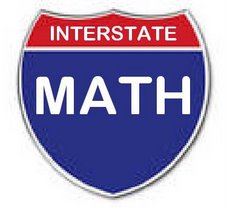| NINE STATES INVOLVED IN PROJECT TO DESIGN NEW COLLEGE PLACEMENT TEST |
| BALTIMORE, MD (April 10, 2007) |
| Maryland has joined with eight other states in a program to develop a new national assessment for Algebra II. It is envisioned that many colleges and universities will use the assessment for placement decisions in freshman math courses. The test is being produced by the American Diploma Project (ADP) Secondary Math Partnership, under the auspices of Achieve, a nonprofit education policy organization. Joining Maryland in the effort are Arkansas, Indiana, Kentucky, Massachusetts, New Jersey, Ohio, Pennsylvania, and Rhode Island. The test will be a voluntary assessment of the content typically covered in a high school Algebra II course and the math content generally considered by colleges and universities for placement decisions. It will not be tied to high school graduation in Maryland. "College and university leaders tell us that Algebra II is a stepping stone to college success," said State Superintendent of Schools Nancy S. Grasmick. "By mastering Algebra II, students are prepared to enter credit-bearing college mathematics courses and by being clearer on those expectations for both teachers and students, we will help improve the success students will have at the postsecondary level." Algebra II skills are assessed by many postsecondary schools throughout the nation. However, some of the tests used by colleges do not match up with high school Algebra II standards in many states, putting students at a disadvantage. Maryland's involvement in the development of the new assessment will help assure that the test is aligned with the state's Algebra II content standards, and could reduce the amount of mathematics remediation necessary on college campuses. The ADP Secondary Math Partnership will develop the voluntary assessment over the next year and will make it available to states in May 2008. The test could be ready for Maryland implementation in 2009. |
Wednesday, April 11, 2007
MARYLAND JOINS IN NATIONAL ALGEBRA II EFFORT
Friday, April 6, 2007
Little benefit found from classroom software
http://www.baltimoresun.com/news/education/bal-md.software06apr06,0,2588364.story?coll=bal-education-k12
From the Baltimore Sun
By Liz Bowie
sun reporter
April 6, 2007
Educational software - which is used in most school districts across Maryland - appears to have no effect in improving student achievement although it can cost as much as $100 per child, a federally funded study has concluded.
The results of the study, which was released this week by the U.S. Department of Education, is likely to prompt school districts, including Baltimore's, to look more closely at whether to purchase the software or invest in other strategies.
The educational software industry is disputing the study's findings, saying they could have been skewed by poor training of teachers and other factors.
Educational software is used throughout Maryland, often for use by students who are struggling academically.
"I think in most school systems there is some reading and math software," said Jayne Moore, director of instructional technology at the state Department of Education. Systems are not buying it for use in every classroom, she said, but are using it strategically.
The industry, which has grown rapidly, has been harmed by instances of corruption.
Former Prince George's County Superintendent Andre J. Hornsby was fired and indicted after the school system purchased software from LeapFrog School House, a company represented by his girlfriend.
Hornsby is charged with receiving kickbacks for steering contracts to the company.
Baltimore, which uses some educational software, is considering buying some of the kind used in the study for ninth-grade algebra students who are having problems, said Linda Chinnia, the chief academic officer.
Baltimore County would not say whether it is using educational software.
Howard County uses math software for thousands of students, including those trying to pass algebra and those trying to learn math facts in elementary school. The county has been trying out in elementary and middle schools a program called FASTTMath, which helps assess what students don't know and drills them.
About 2,200 students use the program in conjunction with teaching strategies that help students understand the concepts behind the drills.
"I think we have always been very careful about the software we select. Our approach is not to replace a teacher," said Jon Wray, who heads math instruction in the county.
Howard high schools are also using the software in classrooms for those struggling with algebra and data analysis. Wray said every high school has at least one class that uses the software and that some have as many as six. The startup cost for each classroom is about $117,000, he said, including the salaries for two teachers.
Moore said algebra software has helped students in Carroll County. But she and local educators said the software works only when used as part of a curriculum.
"I didn't find the study particularly surprising. If we have poor instruction taking place, software isn't going to change achievement," said Prince George's Superintendent John E. Deasy.
His county uses software across the curriculum, although it has not bought any recently, he said. Deasy said he has no illusion that it the software is a "magic bullet."
The study was conducted during the 2003-2004 school year in 132 schools with more than 9,000 students. Teachers who participated were divided between control classrooms and those using a particular software program.
The study found no statistically significant difference between the students in the control group and those in the classrooms with the software.
The federal study, conducted for the Institute of Education Sciences, "doesn't say stop buying this. It says think hard and try to get more evidence," said Phoebe Cottingham, a commissioner at the institute.
From the Baltimore Sun
By Liz Bowie
sun reporter
April 6, 2007
Educational software - which is used in most school districts across Maryland - appears to have no effect in improving student achievement although it can cost as much as $100 per child, a federally funded study has concluded.
The results of the study, which was released this week by the U.S. Department of Education, is likely to prompt school districts, including Baltimore's, to look more closely at whether to purchase the software or invest in other strategies.
The educational software industry is disputing the study's findings, saying they could have been skewed by poor training of teachers and other factors.
Educational software is used throughout Maryland, often for use by students who are struggling academically.
"I think in most school systems there is some reading and math software," said Jayne Moore, director of instructional technology at the state Department of Education. Systems are not buying it for use in every classroom, she said, but are using it strategically.
The industry, which has grown rapidly, has been harmed by instances of corruption.
Former Prince George's County Superintendent Andre J. Hornsby was fired and indicted after the school system purchased software from LeapFrog School House, a company represented by his girlfriend.
Hornsby is charged with receiving kickbacks for steering contracts to the company.
Baltimore, which uses some educational software, is considering buying some of the kind used in the study for ninth-grade algebra students who are having problems, said Linda Chinnia, the chief academic officer.
Baltimore County would not say whether it is using educational software.
Howard County uses math software for thousands of students, including those trying to pass algebra and those trying to learn math facts in elementary school. The county has been trying out in elementary and middle schools a program called FASTTMath, which helps assess what students don't know and drills them.
About 2,200 students use the program in conjunction with teaching strategies that help students understand the concepts behind the drills.
"I think we have always been very careful about the software we select. Our approach is not to replace a teacher," said Jon Wray, who heads math instruction in the county.
Howard high schools are also using the software in classrooms for those struggling with algebra and data analysis. Wray said every high school has at least one class that uses the software and that some have as many as six. The startup cost for each classroom is about $117,000, he said, including the salaries for two teachers.
Moore said algebra software has helped students in Carroll County. But she and local educators said the software works only when used as part of a curriculum.
"I didn't find the study particularly surprising. If we have poor instruction taking place, software isn't going to change achievement," said Prince George's Superintendent John E. Deasy.
His county uses software across the curriculum, although it has not bought any recently, he said. Deasy said he has no illusion that it the software is a "magic bullet."
The study was conducted during the 2003-2004 school year in 132 schools with more than 9,000 students. Teachers who participated were divided between control classrooms and those using a particular software program.
The study found no statistically significant difference between the students in the control group and those in the classrooms with the software.
The federal study, conducted for the Institute of Education Sciences, "doesn't say stop buying this. It says think hard and try to get more evidence," said Phoebe Cottingham, a commissioner at the institute.
Subscribe to:
Comments (Atom)

